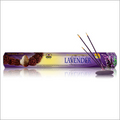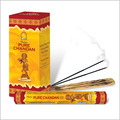|
|
| |
| Padma Perfumery Works Replenish your senses! |
| Rose Incense |
White Musk Incense |
Al Oudh Incense |
Sheik Al Arab Blue |
Jasmine Incense |
|
|
|
|
|
 |
 |
 |
 |
 |
|
|
|
Galangal
Similar to Ginger in taste and appearance, Galangal is also one type of spice belonging to the ginger family. Like ginger, Galangal is  also a root or rhizome and refers to four spices of plant namely, Galangal namely, Alpinia galanga(greater galangal), Alpinia officinarumor greater galangal (lesser galangal), Kaempferia galangal ( Kencur, aromatic ginger), Boesenbergia pandurata (Chinese ginger or fingerroot). The rhizomes of greater Galangal are deep orange-brown in color, its aroma is strong and taste is bitter. Lesser galangal is smaller and has reddish-brown color and a stronger odor and taste. Galangal mostly grows in the Eastern Himalayas and South West India. Alpinia galanga or greater galanga, is a very important herb used in Thai or Indonesia recipies, it is even named as Thai Galangal on this basis. also a root or rhizome and refers to four spices of plant namely, Galangal namely, Alpinia galanga(greater galangal), Alpinia officinarumor greater galangal (lesser galangal), Kaempferia galangal ( Kencur, aromatic ginger), Boesenbergia pandurata (Chinese ginger or fingerroot). The rhizomes of greater Galangal are deep orange-brown in color, its aroma is strong and taste is bitter. Lesser galangal is smaller and has reddish-brown color and a stronger odor and taste. Galangal mostly grows in the Eastern Himalayas and South West India. Alpinia galanga or greater galanga, is a very important herb used in Thai or Indonesia recipies, it is even named as Thai Galangal on this basis.
Benefits of Galangal
Galangal is effective in relieving flatulence, bronchitis, infection, rheumatism, liver and gallbladder complaints. Even some kind of fevers, colds, cough, sore throat, dyspepsia, nausea, vomiting, loss of appetite, and motion sickness can be relieved by consuming Galangal. Further, it is also used for treating abdominal pain, diarrhea, and hiccups. Moreover, it has antibacterial and antispasmodic properties also. As a stimulant, it is also used in homeopathic medicine. Galangal may have benefits of lipid-lowering.
Galangal Oil

Galangal yields a volatile oil of pale yellow to olive-brown color and eucalyptus-cardamom-ginger-like odor. It also carries medicative properties and has elaborate use in medicinal preparations. It can be effective in curing the symptoms of respiratory troubles or in calming the stomach etc. It is also rarely used in perfumes. Various factors like age of the plant, type of soil,area of cultivation, season, climatic, time of harvest etc determines the composition of the volatile oil, but usually it consists of methyl-cinnamate (48 %), cineol (20 to 30 %), some camphor and probably d-pinene.
Galangal For Cancer
London researchers from the King's College have found out that people eating Galangal spiced Thai curry or other Thai food have reduced chances for the growth of cancer cells. Than, in London also, through a study of COR L23 lung cancer and MCF7 breast cancer cell lines, researchers have proved about cancer restraining property of Galangal. Galangin, a flavonoid present in Galangal has anti-oxidative and free radical scavenging properties that can suppresses the genotoxicity of chemicals, by modulating certain enzymes.
|
|
|









 also a root or rhizome and refers to four spices of plant namely, Galangal namely, Alpinia galanga(greater galangal), Alpinia officinarumor greater galangal (lesser galangal), Kaempferia galangal ( Kencur, aromatic ginger), Boesenbergia pandurata (Chinese ginger or fingerroot). The rhizomes of greater Galangal are deep orange-brown in color, its aroma is strong and taste is bitter. Lesser galangal is smaller and has reddish-brown color and a stronger odor and taste. Galangal mostly grows in the Eastern Himalayas and South West India. Alpinia galanga or greater galanga, is a very important herb used in Thai or Indonesia recipies, it is even named as Thai Galangal on this basis.
also a root or rhizome and refers to four spices of plant namely, Galangal namely, Alpinia galanga(greater galangal), Alpinia officinarumor greater galangal (lesser galangal), Kaempferia galangal ( Kencur, aromatic ginger), Boesenbergia pandurata (Chinese ginger or fingerroot). The rhizomes of greater Galangal are deep orange-brown in color, its aroma is strong and taste is bitter. Lesser galangal is smaller and has reddish-brown color and a stronger odor and taste. Galangal mostly grows in the Eastern Himalayas and South West India. Alpinia galanga or greater galanga, is a very important herb used in Thai or Indonesia recipies, it is even named as Thai Galangal on this basis. 
